Chinatown brings back the 1600s in new museum

MANILA, Philippines — It’s like stepping back in time. An interactive map shows you the different names of streets way back then and now. At the first gallery, you get a glimpse of where it began, the mission settlement across the river from Intramuros in Binondo, where Christianized Chinese immigrants called sangleys settled in 1594. A photo exhibit shows the history of the Binondo Church through the years, how it looked, how it survived earthquakes, destroyed by wars, and then reconstructed.
It’s a visual narrative. “We chose highlights of Binondo history, from 1565 to the present,” says Janine Cabato, curator of the newly opened Chinatown Museum at the Lucky Chinatown mall in Binondo, Manila. Carefully researched and meticulously curated, the exhibits in the museum’s 18 galleries “focus on various influences and historical events that have shaped the cultural, social and economic threads of Binondo — from its establishment as a settlement for Christianized Chinese to the height of downtown Escolta on its way to becoming a bustling commercial center of colonial Manila.”

The Binondo Church dates back to the early days of the mission settlement across the river from Intramuros.
An entire gallery is devoted to the Alcaiceria, meaning, “the king’s market,” which was constructed in 1752 following a Royal Decree of Ferdinand VI. “All the items on display are items that were traded during that time — housewares, textiles and various commodities,” Cabato explained. On the second floor of the shophouses were the residences of the transient Chinese merchants. A controversial area, Cabato points out, is a dark and dingy representation of an opium den, which served as a source of entertainment for the Chinese laborers.
Featured also are the various industries during that time. A faithful reproduction of an antique bed from Eduardo Athay’s Taller de Carpenteria is on display. “There were three generations of carpenters in the family. Known for their cabinets, this bed shows Athay’s signature mark,” Cabato noted. “An Athay bed was recently auctioned for six million.”
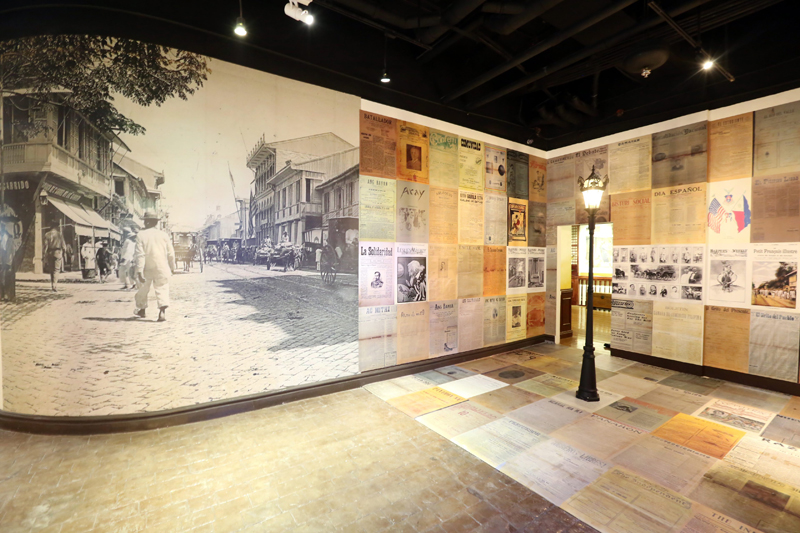
One of the most challenging in terms of research is this gallery featuring publications at the turn of the century.
A lot of factories were located in Binondo such as the tobacco factories. On display on one wall are cigar covers from the private collection of Edward de los Santos, while the other side is specific to the La Insular Cigar and Cigarette Factory, a pre-war Binondo landmark which stood just beside the Binondo Church.
One corner is dedicated to the Esteros de Binondo, which played an important role in trade and commerce. A video presentation explains that Binondo was actually an island bounded by estuaries, with fresh water flowing from the Pasig River and salt water from Manila Bay.
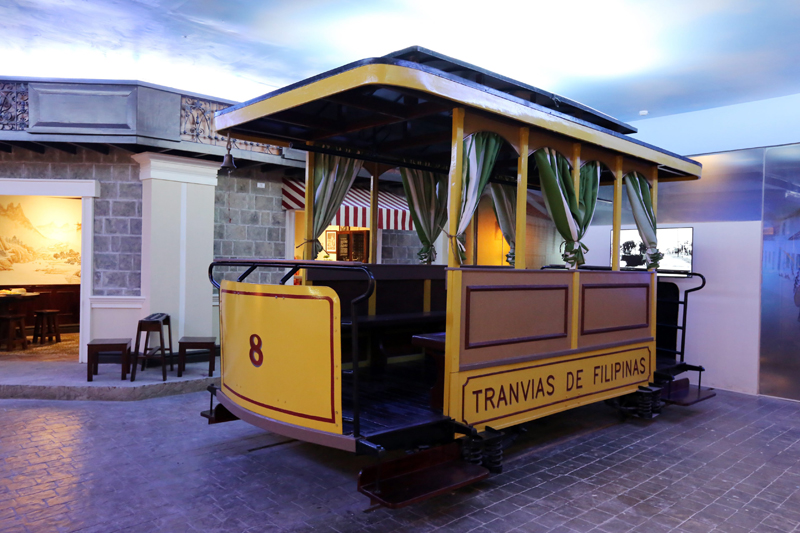
You can “ride” a tranvia while watching a video about its history.
It was in Binondo where the country’s first three banks opened: Standard Chartered Bank, Bank of the Philippine Islands, and Hong Kong and Shanghai Banking Corp. The original Manila Stock Exchange was based in Binondo. In the gallery are displayed old banknotes, which could be of special interest to hobbyists and collectors.
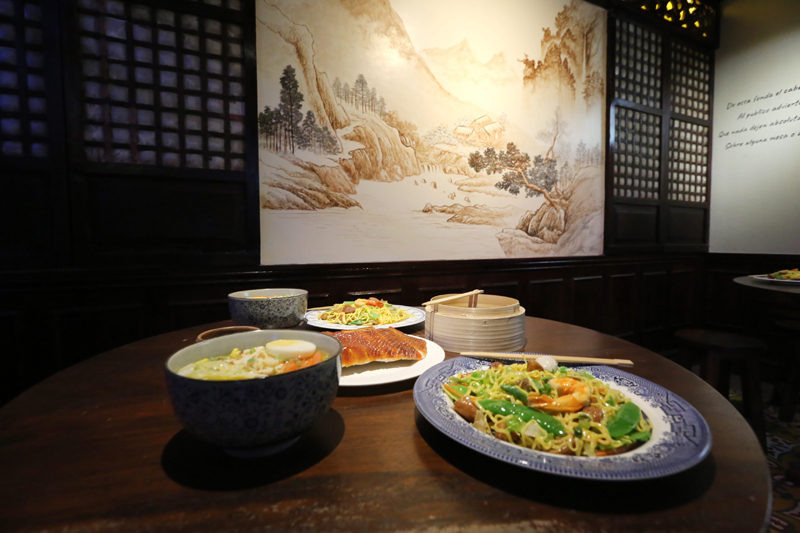
Food props are Instagram-ready for museum visitors
Galleries nine and 10 focus on the turn of the century and the origins of the Philippine Revolution. The Katipunan was founded by Andres Bonifacio in Binondo. A lot of Chinese mestizos were sympathetic to the freedom fighters, among them, businessman and philanthropist, Roman Ongpin, Cabato relates. Although it may appear quite simple in its presentation, one of the most challenging galleries in terms of research is the one which features the publications during this period in Philippine history.
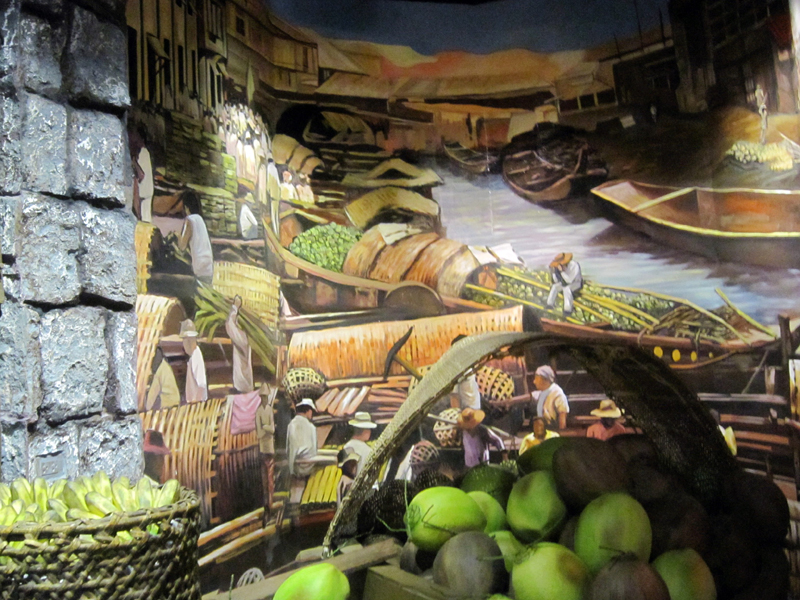
The Esteros de Binondo played an important role in trade and commerce.
The Botica de San Fernando features an interactive Chinese medicine cabinet where you can see and smell the different herbs used by the apothecary. Another gallery features a panaderia with Instagram-ready food props for the millennial museum visitors.
You can “ride” a tranvia while watching a video about its history. “The most fascinating thing about the tranvia is that it was more extensive than our current MRT,” Cabato remarked. “I think this will be a hit among the students. The goal of the exhibits is not only to educate but also to entertain the public.”
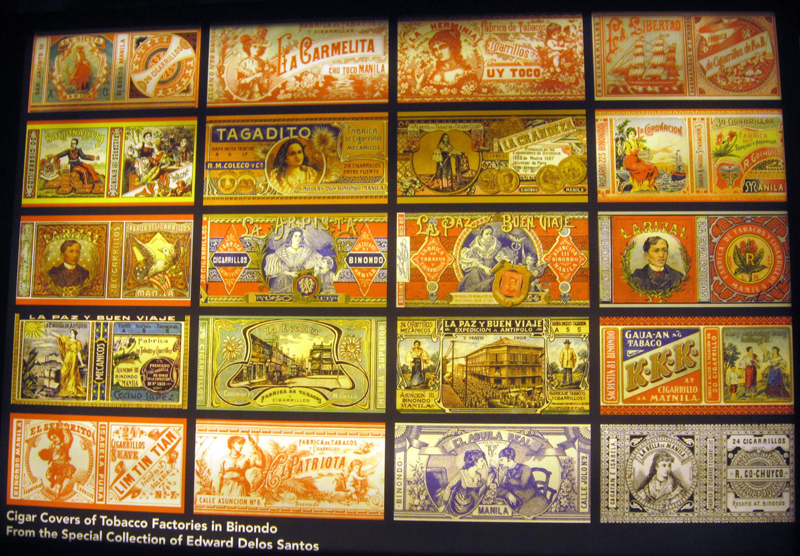
Cigarette covers from the private collection of Edward Delos Santos
For a more immersive and interactive experience, the Chinese Museum app will also be available for download for visitors, for smoother transition between topics and information while inside the museum.
What is unique about the museum is that unlike other museums that are usually found inside old buildings, the Chinatown Museum is located inside a mall. “We want to do away with the perception that museums are located only in old buildings,” Tefel Pasigan-Valentino, Megaworld Lifestyle Malls VP and head of marketing and business development, explains. “Museums are actually a venue for conversation. People would say history and culture is boring. We want to make them exciting. We want to take this closer to the people, to the community. Filipinos are mallgoers, and this is the fastest and best way to communicate with them, especially the younger generation.”
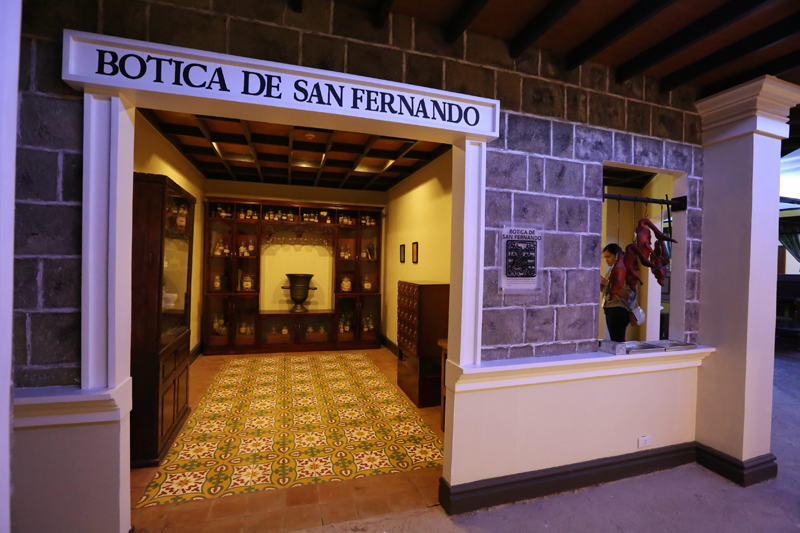
An interactive cabinet of Chinese herbs can be found at the Botica de San Fernando gallery
“It is always important that people understand where they came from,” says Dr. Fernando Zialcita, the museum’s chief consultant and professor of sociology and anthropology at the Ateneo de Manila University. Binondo was Chinatown, possibly the oldest in the world, but it was not only about the Chinese. The Spanish missionaries were here. Different traders came from Europe, Asia and the Americas. “Manila was the world’s first global city,” Zialcita says, quoting from a book by British author David Irving.
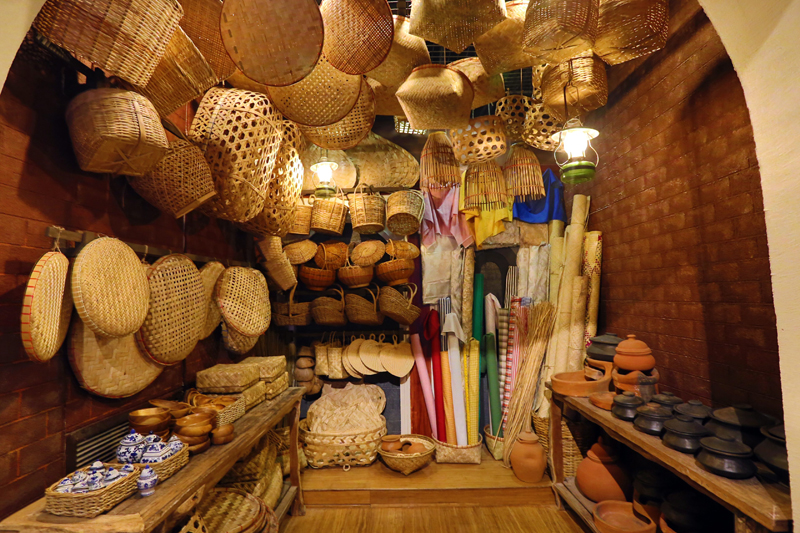
The Alcaiceria or “king’s market” displays commodities traded at that time.
The Chinatown Museum was officially opened with the auspicious striking of a giant gong at the museum’s entrance, led by Kevin L. Tan, Alliance Global Inc. chief executive officer, whose father Dr. Andrew Tan, the visionary founder of real estate giant Megaworld Corp., lived in Binondo when he was a young man. “He saw this district where people worked hard, and inspired his dream to become an entrepreneur. This is his way of giving back to the community where he belonged,” Tan remarked. “We as a company have always made it our goal to integrate arts, culture, history and heritage in the overall character of our developments,” Tan noted. “With Lucky Chinatown being at the center of a community characterized by its rich history, we wanted to extend this passion for the arts and culture to the mall experience and eventually boost tourism in this part of Manila.”
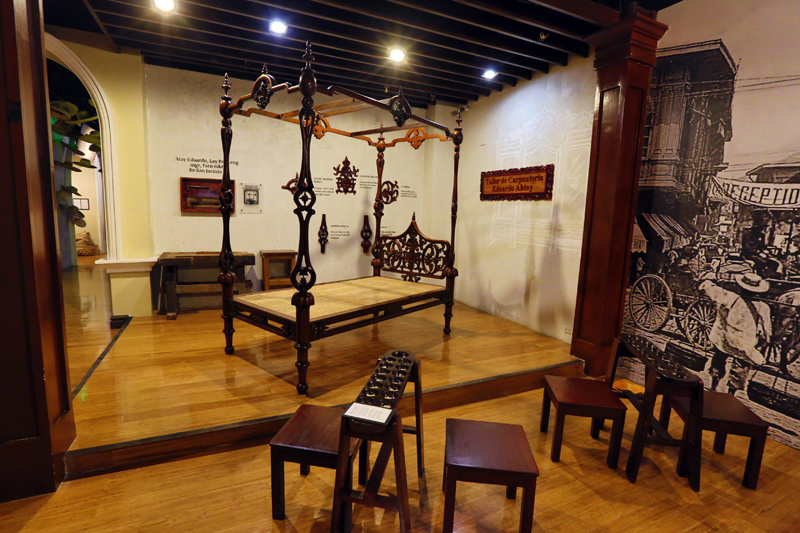
An Athay bed from Eduardo Athay’s Taller de Carpenteria
Chinatown Museum is the second museum venture of the property giant following the opening of the Iloilo Museum of Contemporary Art inside Iloilo Business Park township in Mandurriao, Iloilo last year. In the pipeline are future museums in its townships in Cebu, Pampanga and Pasig City.



















